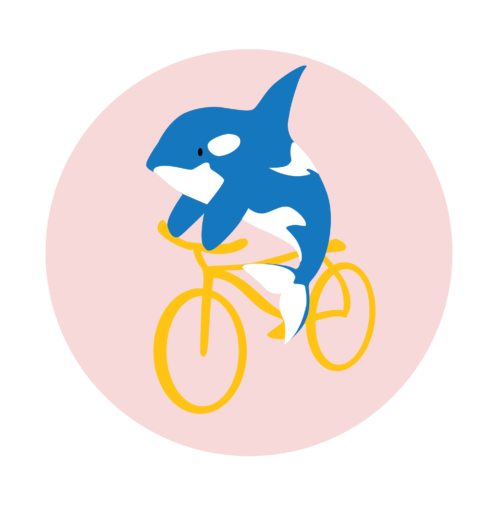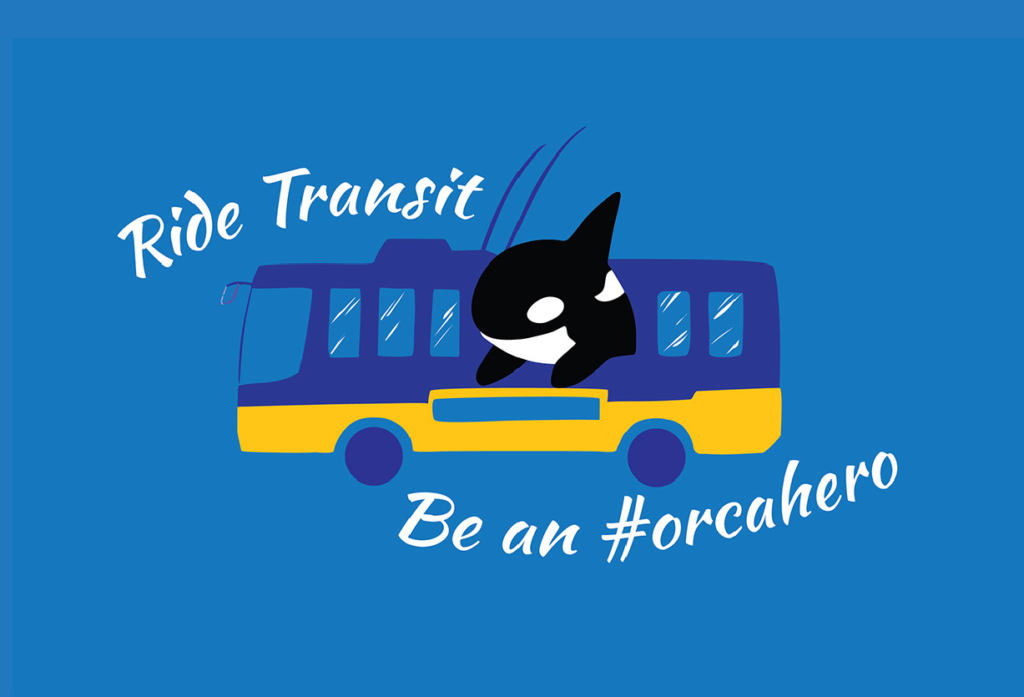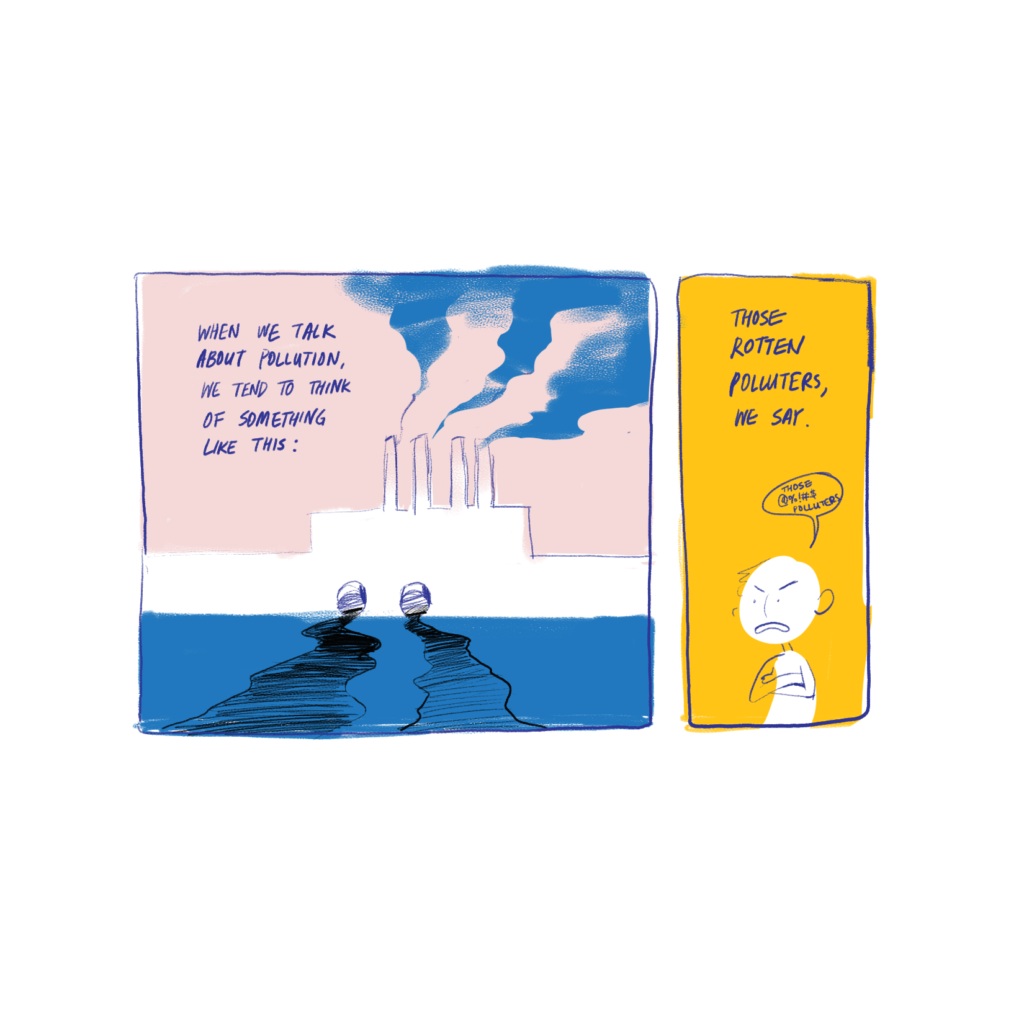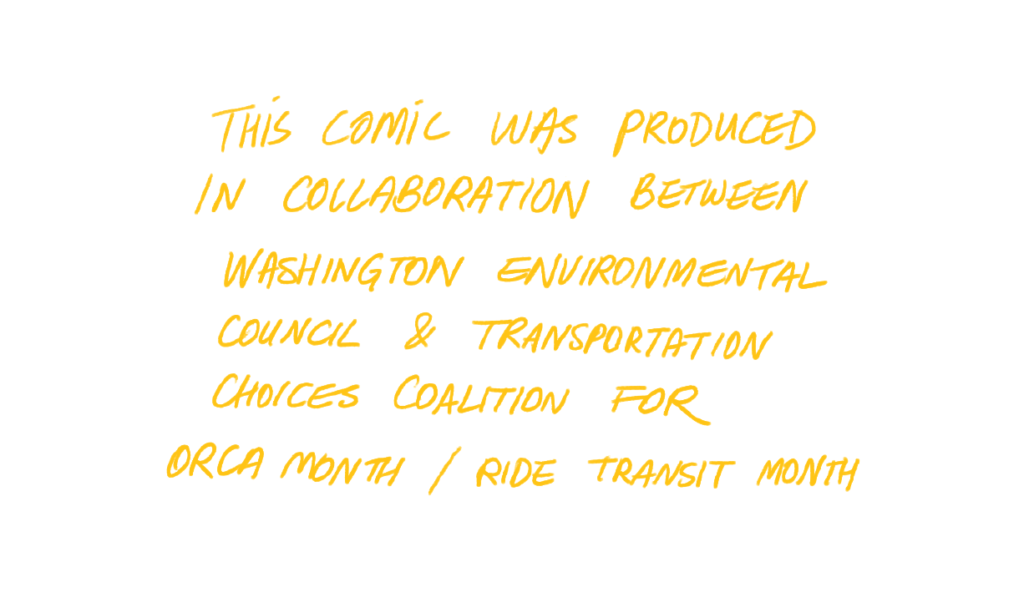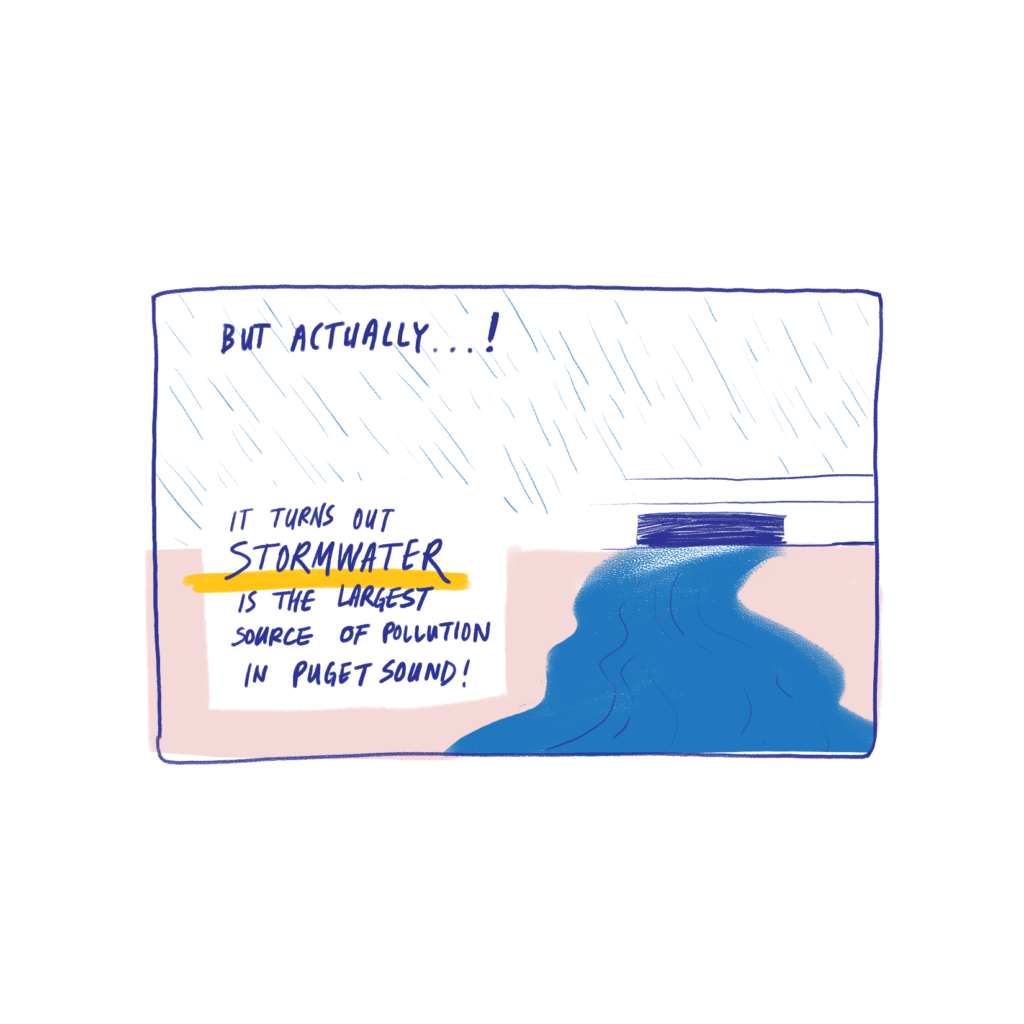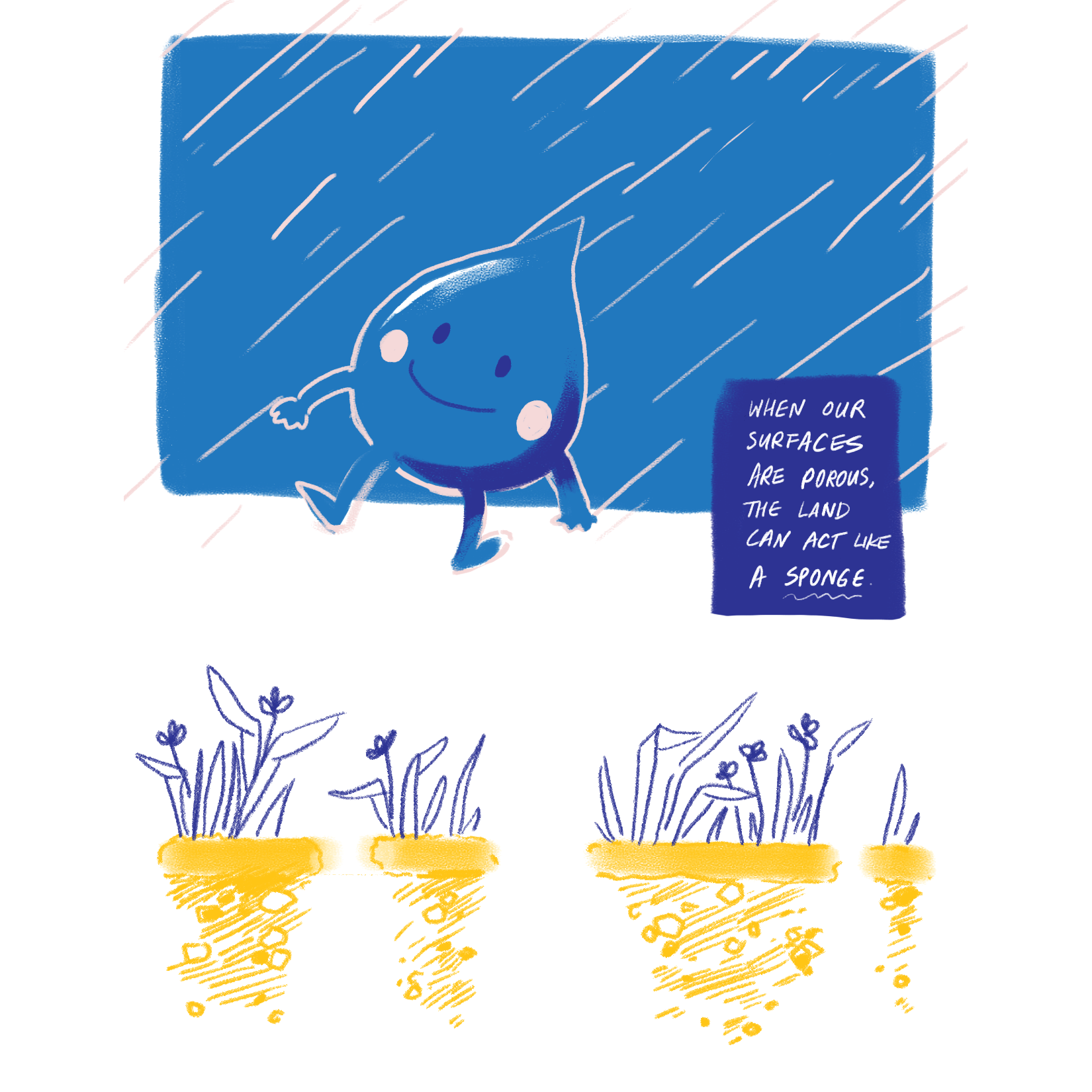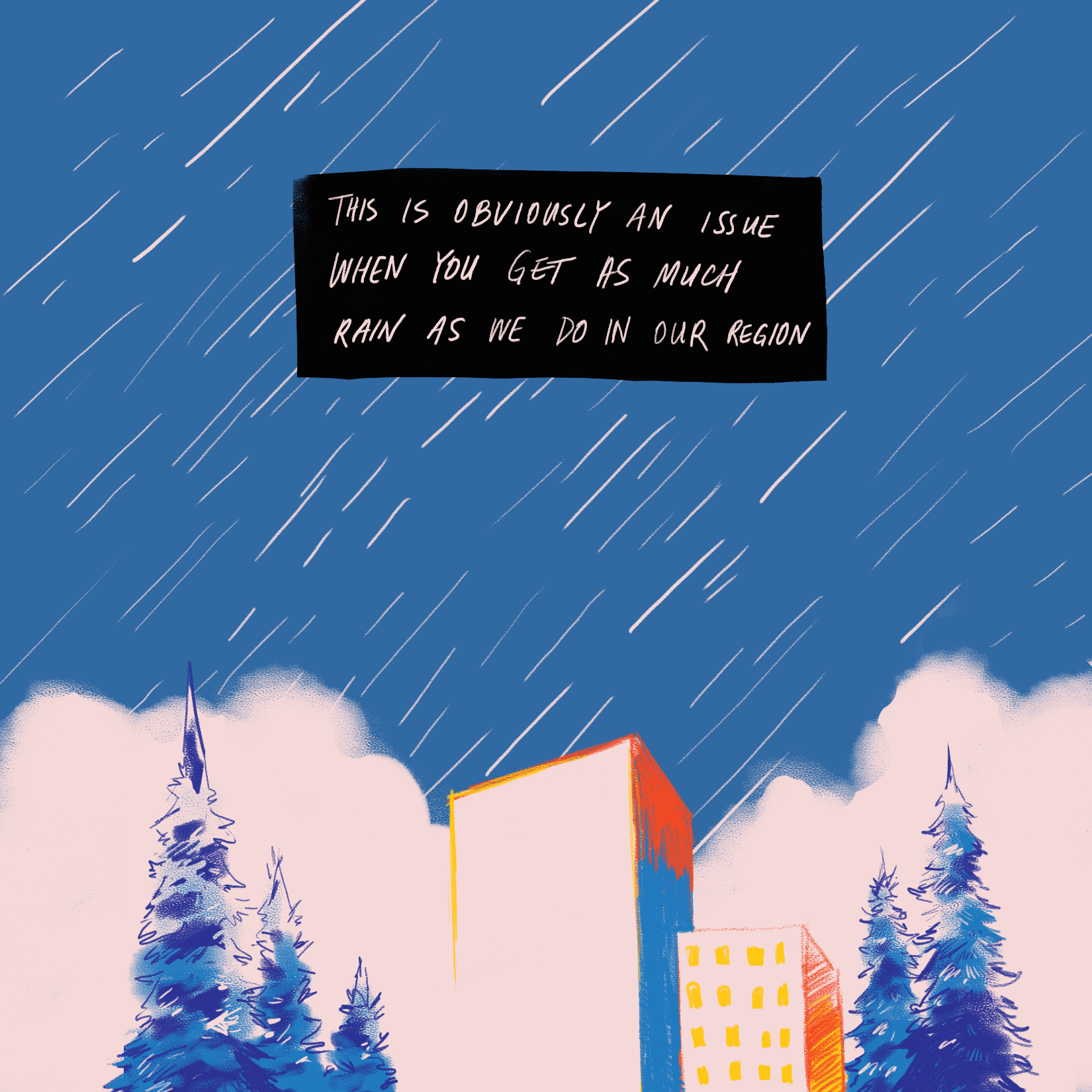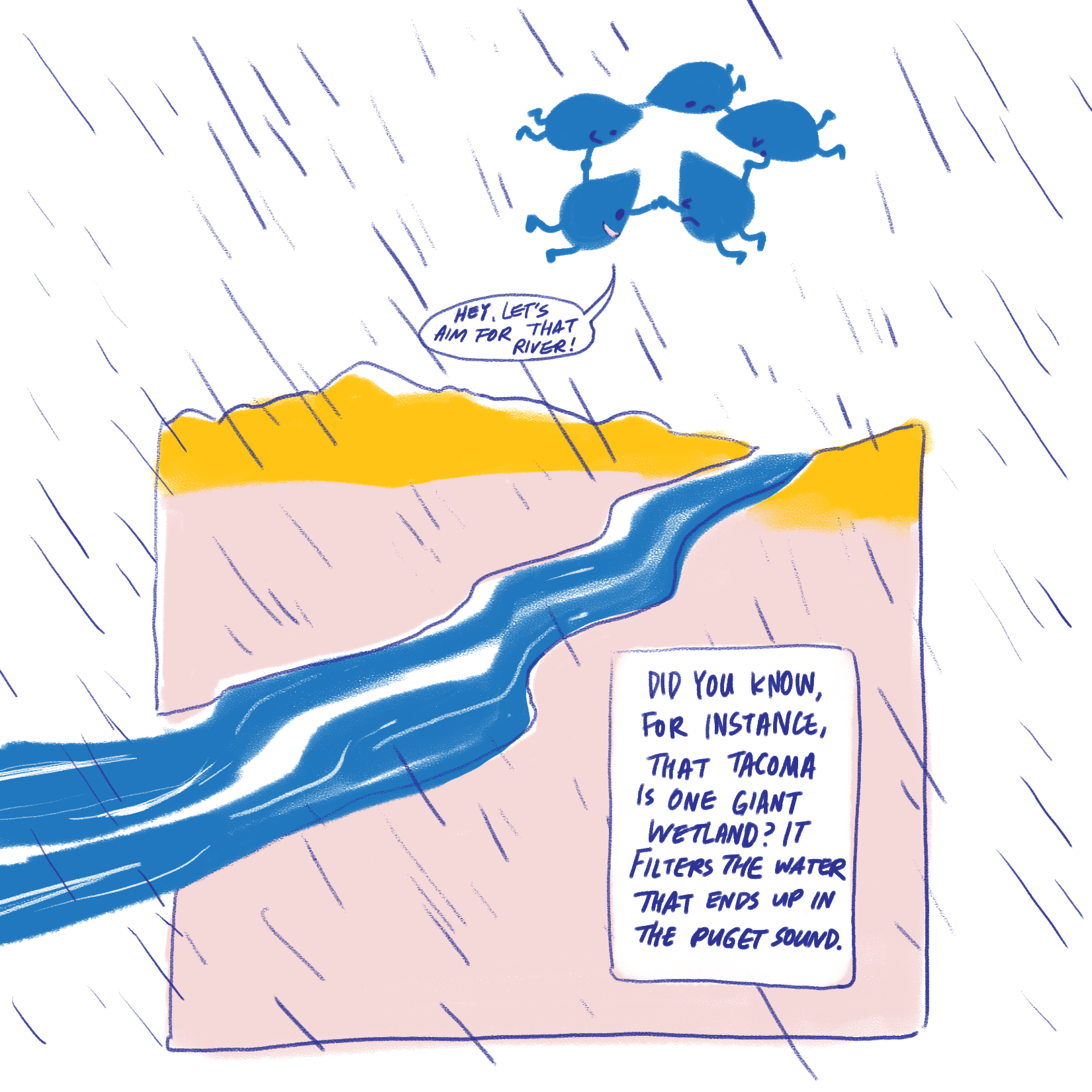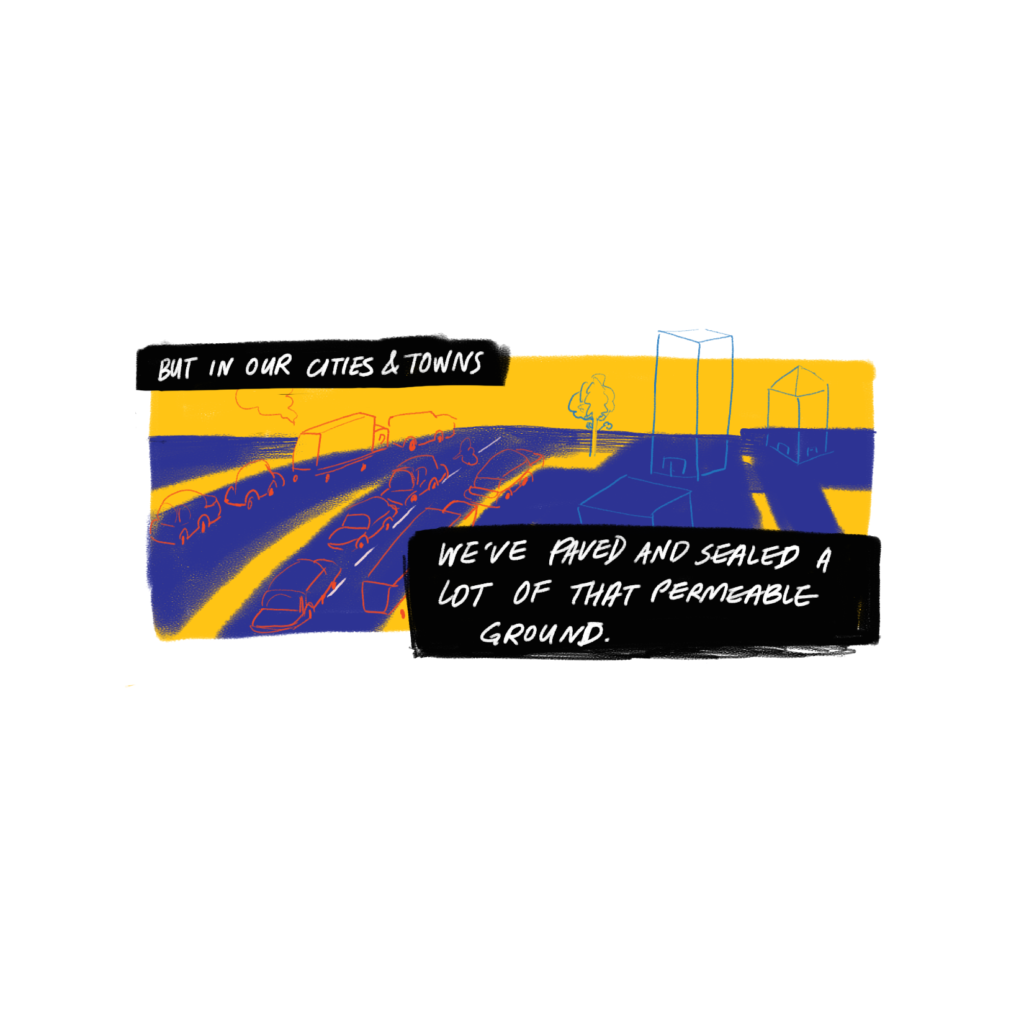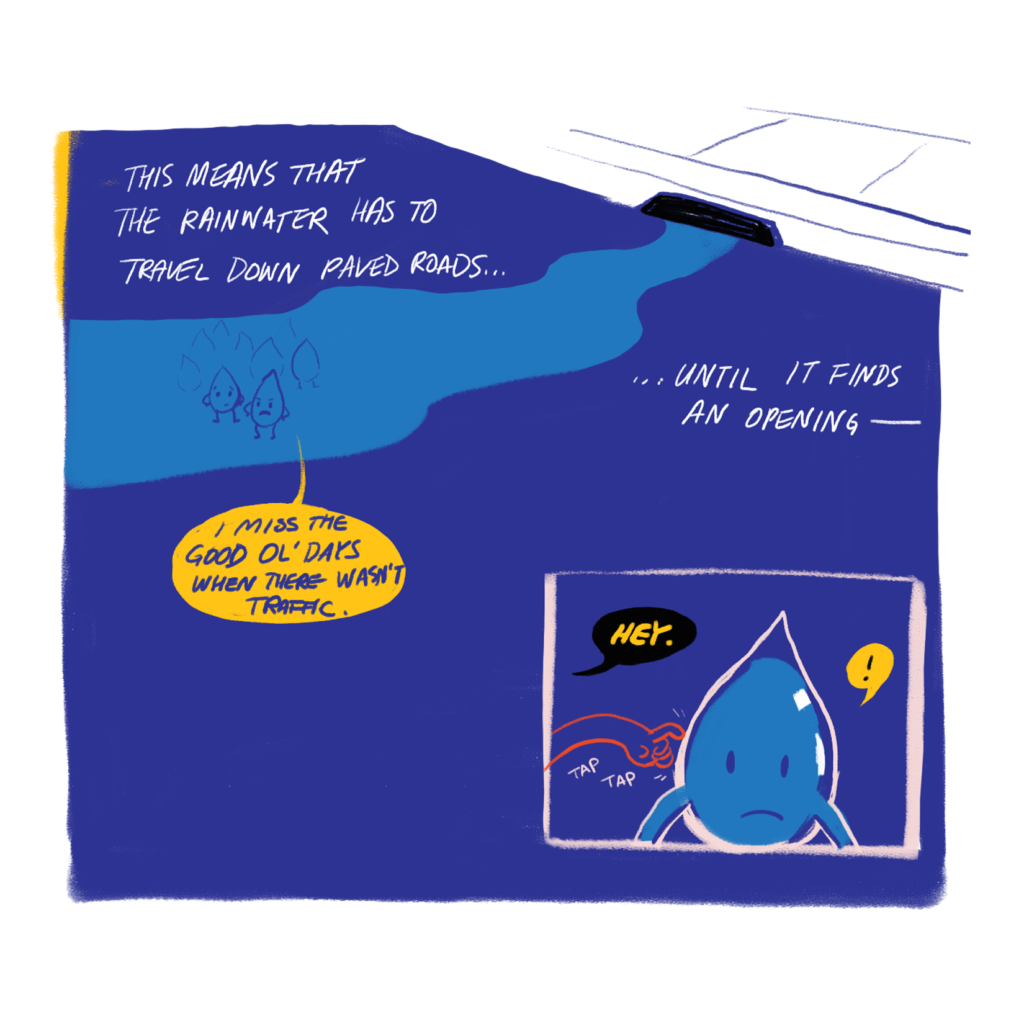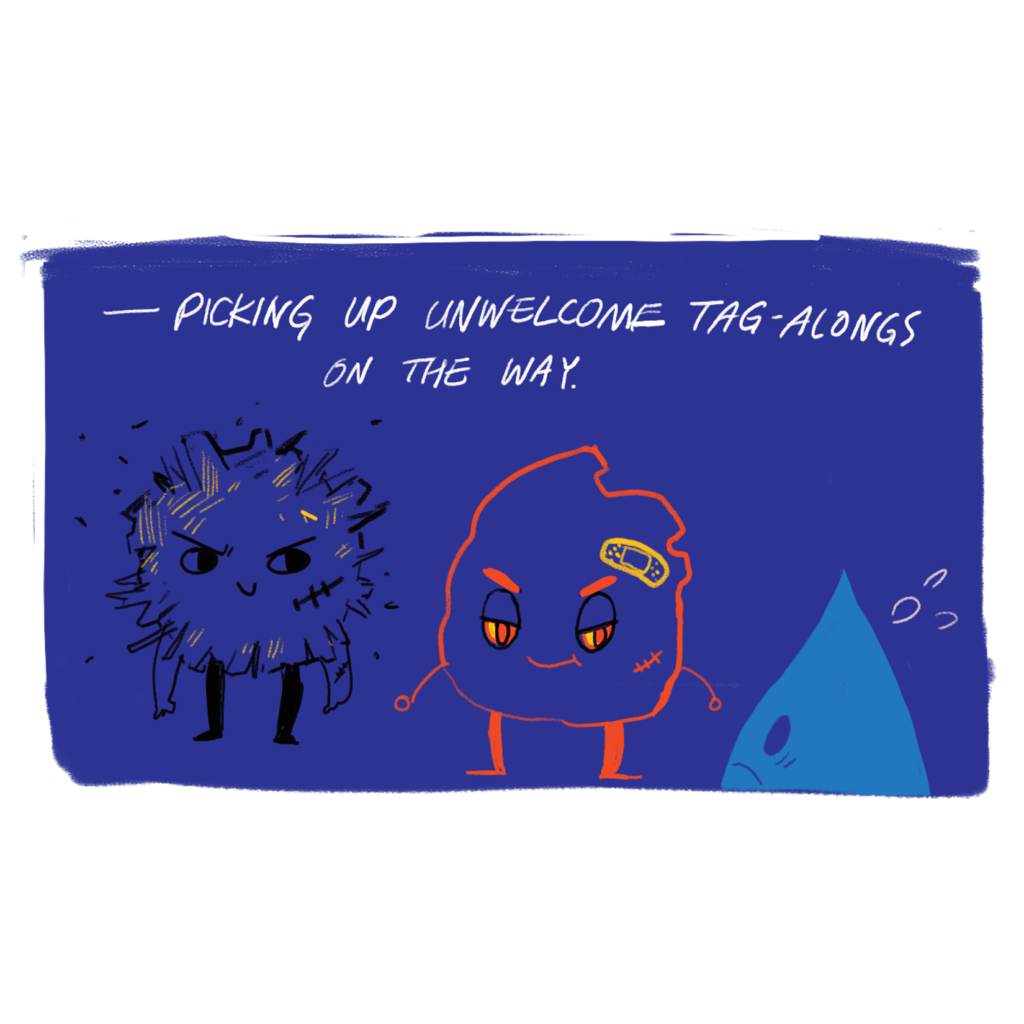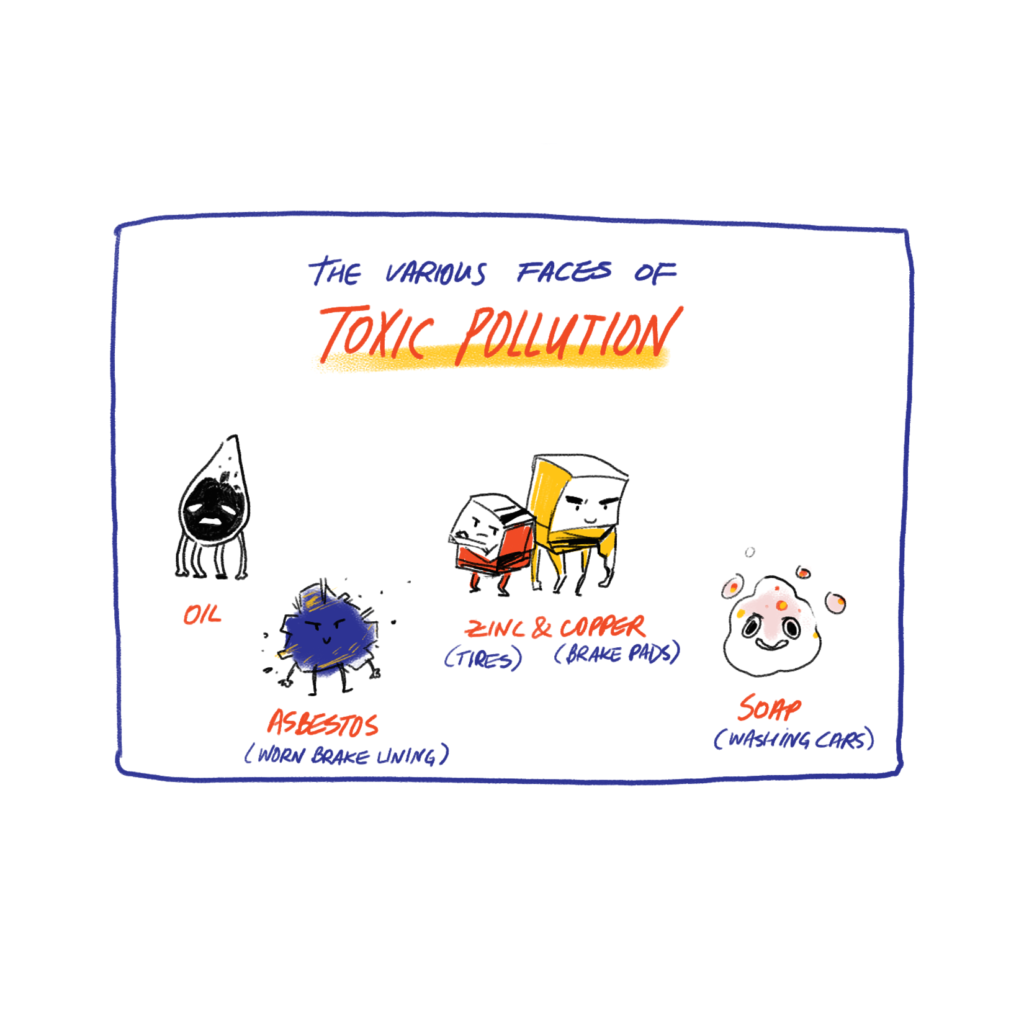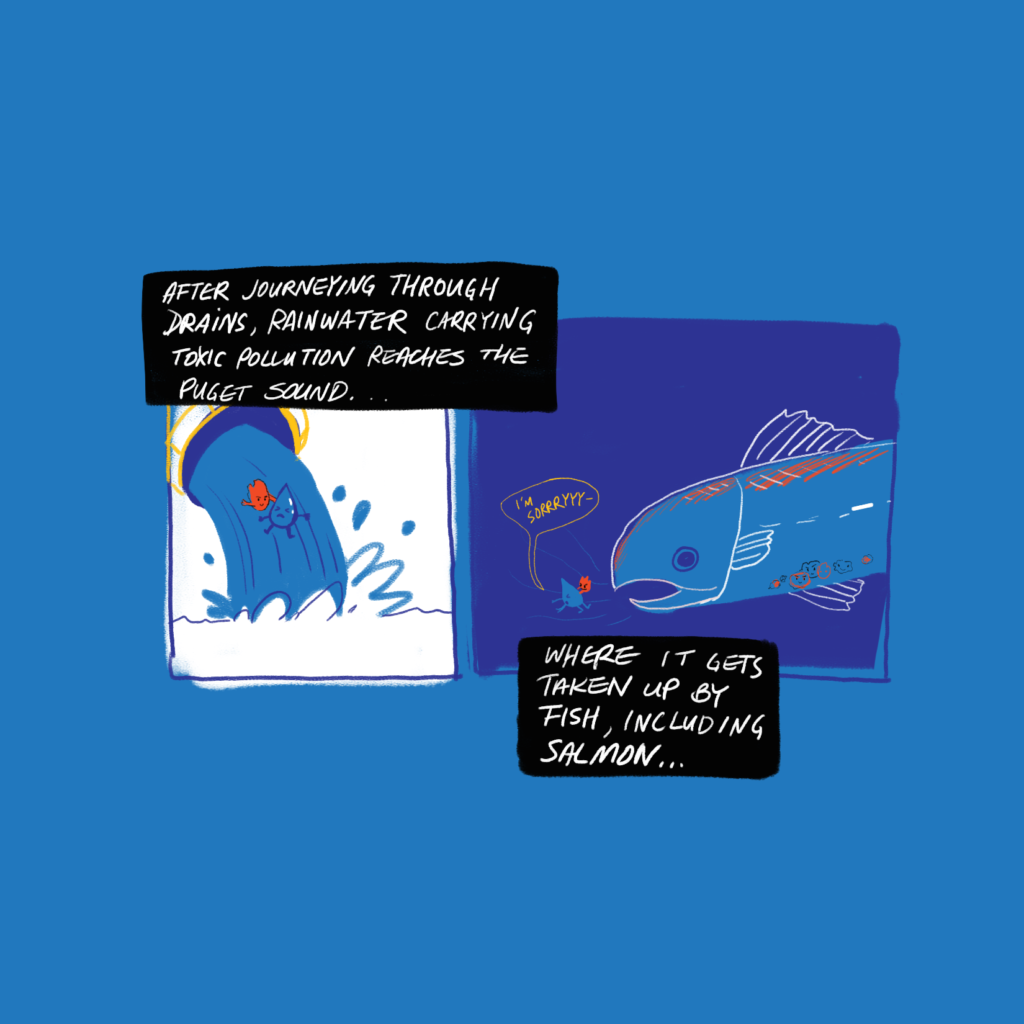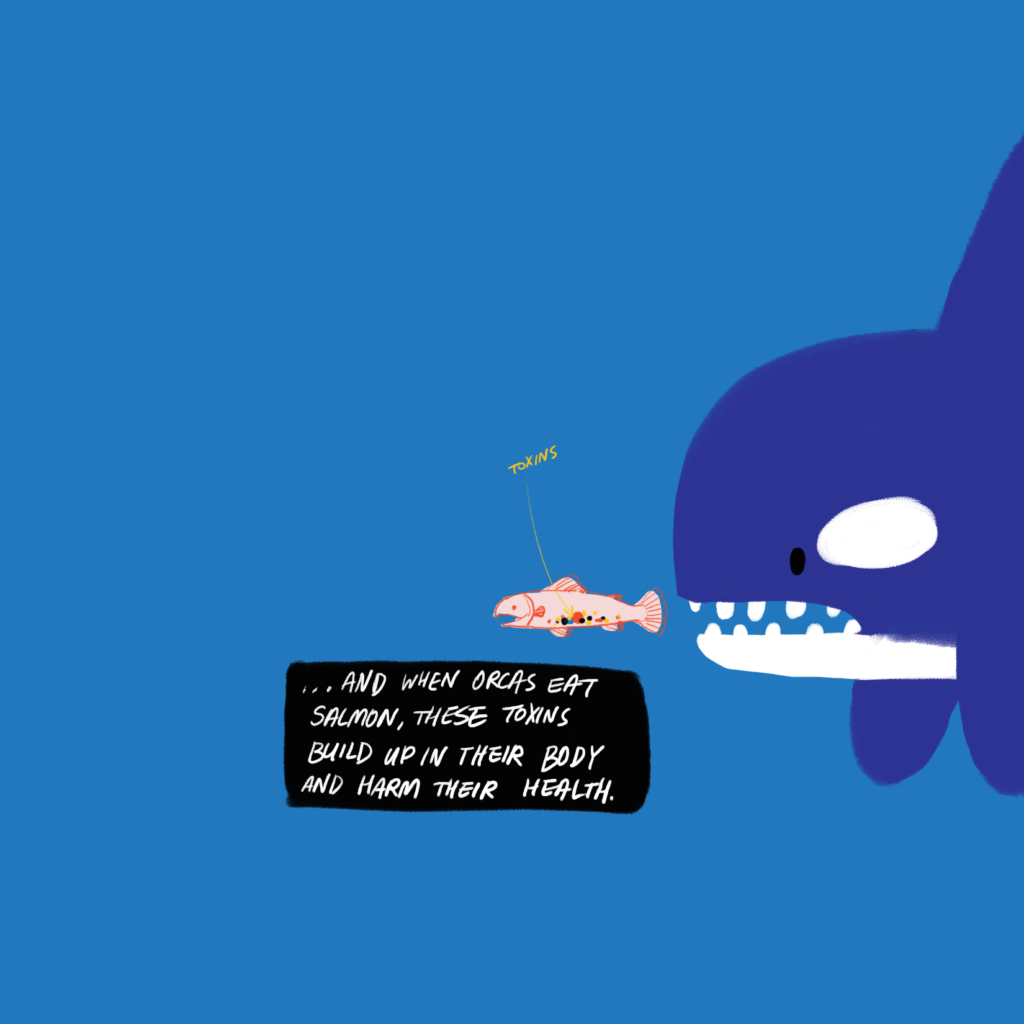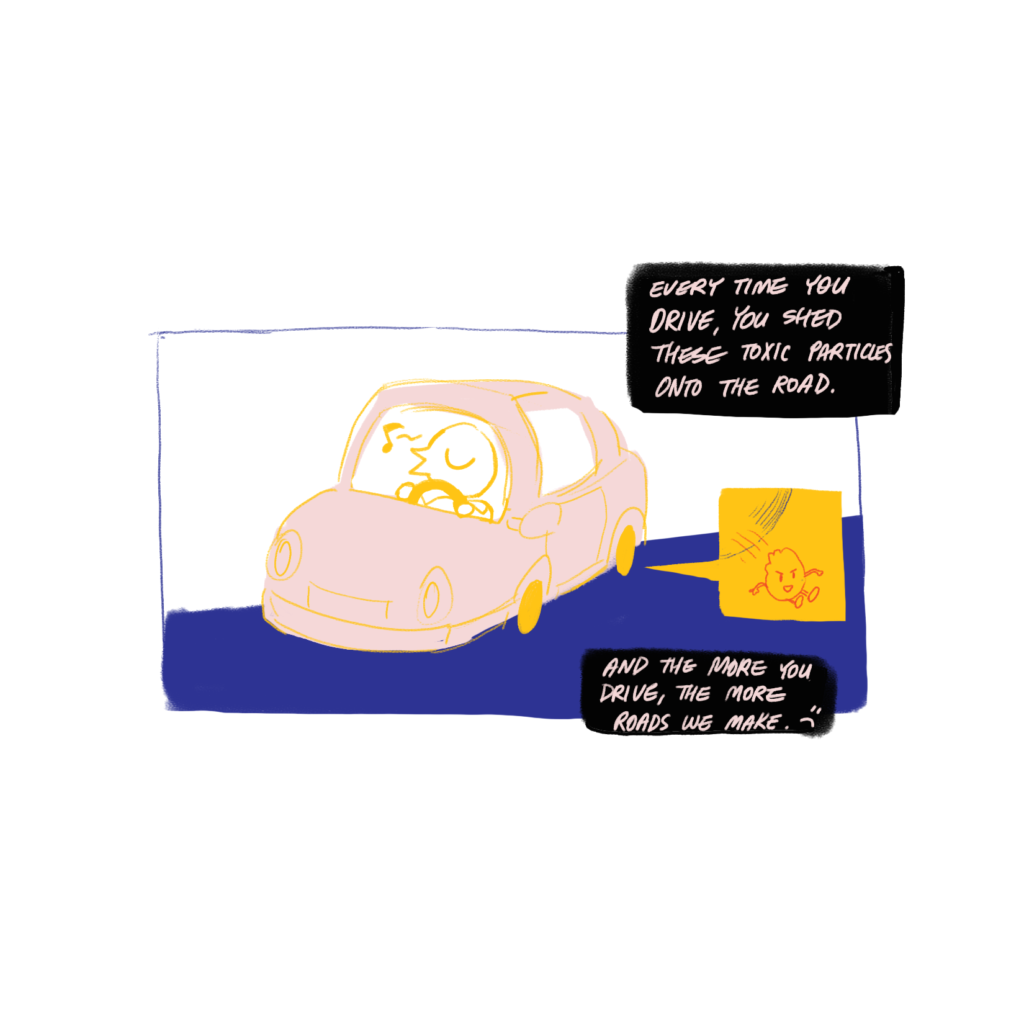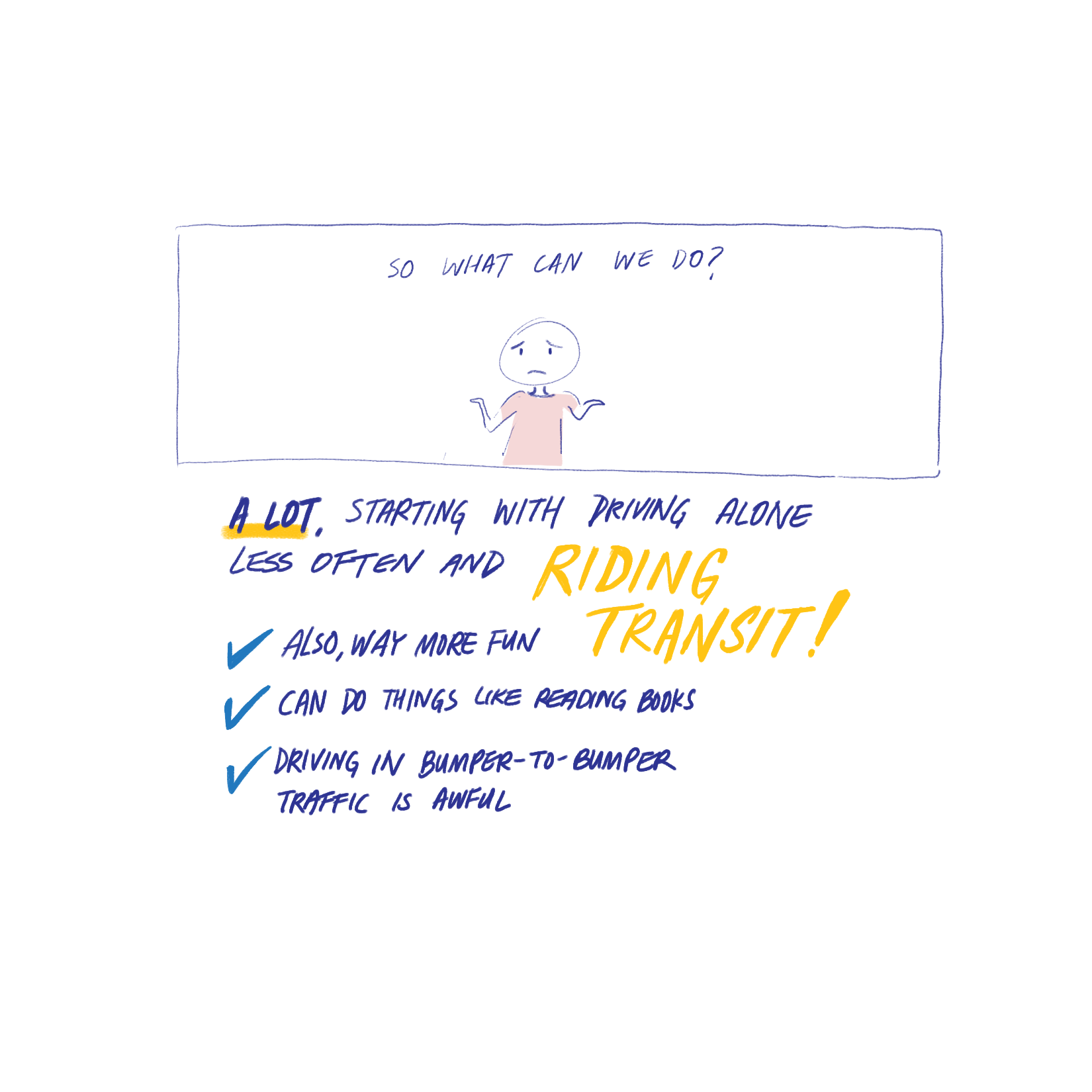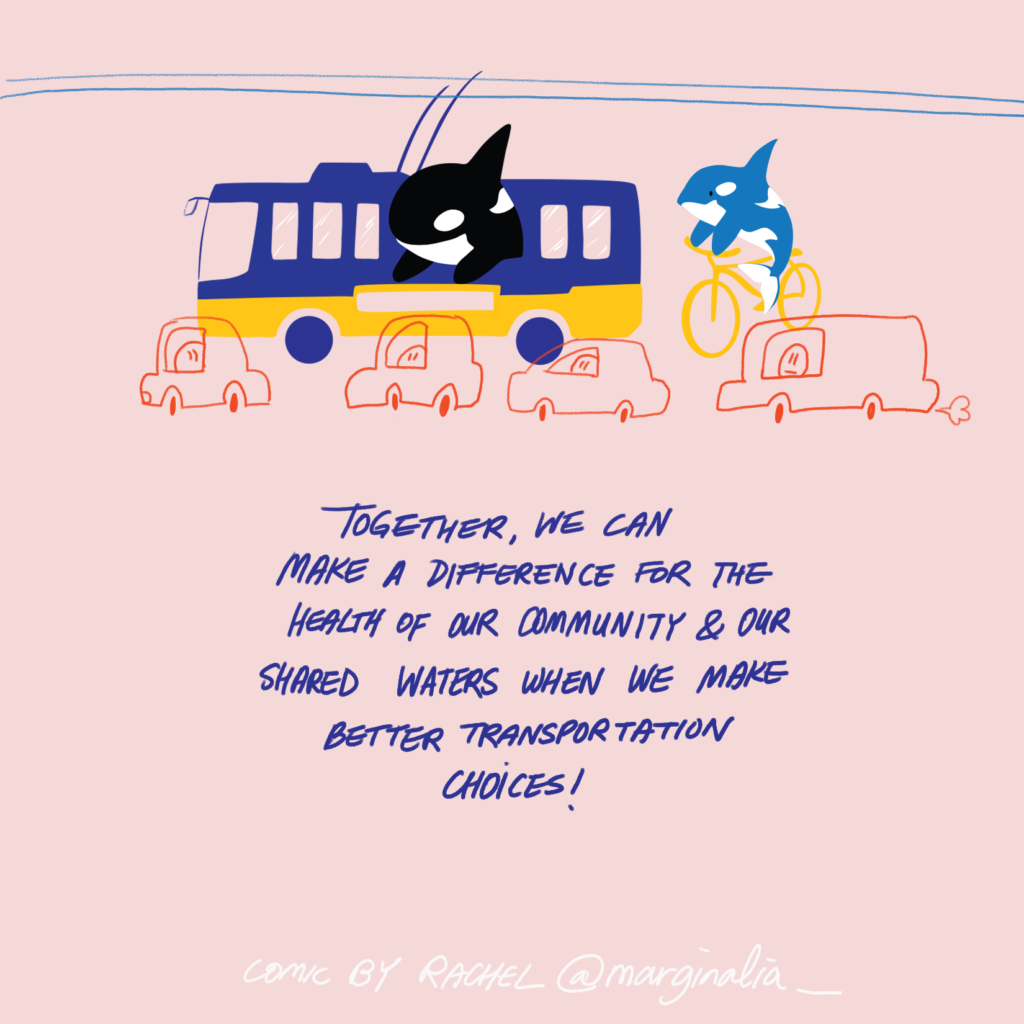
A lot! The way we have designed our cities and streets have impacted our waterways. We have interrupted the natural water cycle by paving surfaces like roads and parking lots. Instead of rain soaking into the soil, it floods our streets and carries pollution to the Puget Sound.
Every time we drive, our cars shed toxic particles like oils, zinc and copper from brake pads and tires, and asbestos from brake linings onto the road. When rain falls, it travels down paved roads, picking up toxic pollution from cars and carrying it to the Puget Sound. Stormwater runoff is the largest contributor to Puget Sound pollution, hurting fish like salmon and accumulating as toxins in our beloved orcas.
So, what is one way we can reduce stormwater pollution? Ride transit!
By riding transit, you are saving a drive-alone car trip and reducing stormwater pollution. When less people drive, that means less cars on the road, less stormwater pollution, a cleaner Puget Sound, and a healthier future for orcas! Together, we can make a difference for the health of our community and our shared waters when we make better transportation choices — like riding transit, walking, and biking.
The Puget Sound will continue to suffer as our regional population grows, development expands, and people continue to drive. In addition to creating green stormwater infrastructure like better drainage systems and permeable pavement to mitigate pollution, we can prevent stormwater pollution at the source by better urban design: developing in urban cores, investing in public and active transportation, and reducing road expansion and driving alone. Transportation Choices Coalition and Washington Environmental Council are working to advocate for policies that protect our local waterways, reducing pollution that impacts community health and wildlife like salmon and orcas.
In celebration of Ride Transit Month and Orca Month, Transportation Choices Coalition and Washington Environmental Council have teamed up to produce a comic about stormwater, orcas, and transit. Scroll below:
Print and share!
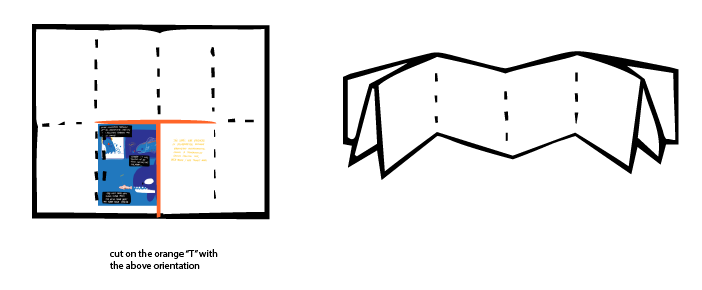
Stormwater facts:
Stormwater runoff has been identified as the number one contributor of pollution to the Puget Sound. (King County)
In Washington state, stormwater pollution contributes to 30 percent of the pollution in waterways. (King County)
There are 27,000 gallons of stormwater runoff from a one-acre parking lot, after one inch of rain. (King County)
Unlike wastewater, stormwater runoff is not sent to high-tech treatment plants to remove pollutants before being discharged to Puget Sound. (King County)
Unfiltered stormwater from our streets can kill salmon in a matter of hours. (Puget Soundkeeper)
Every year, a single paved acre in Seattle produces approximately 1 million gallons of runoff (Puget Soundkeeper)
Resources
Communities working together to protect Puget Sound (Puget Sound Starts Here)
Fix Car Leaks (Don’t Drip & Drive!)
Take the stormwater survey (Puget Soundkeeper)
Nature’s Scorecard. How is your city or county protecting local water quality? (WEC and Puget Soundkeeper)
Stormwater Pollution: The Big Picture (King County Department of Natural Resources and Parks)
Stormwater services and information (King County)
Arlo and the world’s smallest rain garden (Orcas Love Raingardens)
Stormwater discharges from transportation sources (EPA)
Puyallup Watershed Initiative (Russell Family Foundation
Toxic road runoff kills adult coho salmon in hours, study finds (Seattle Times)
